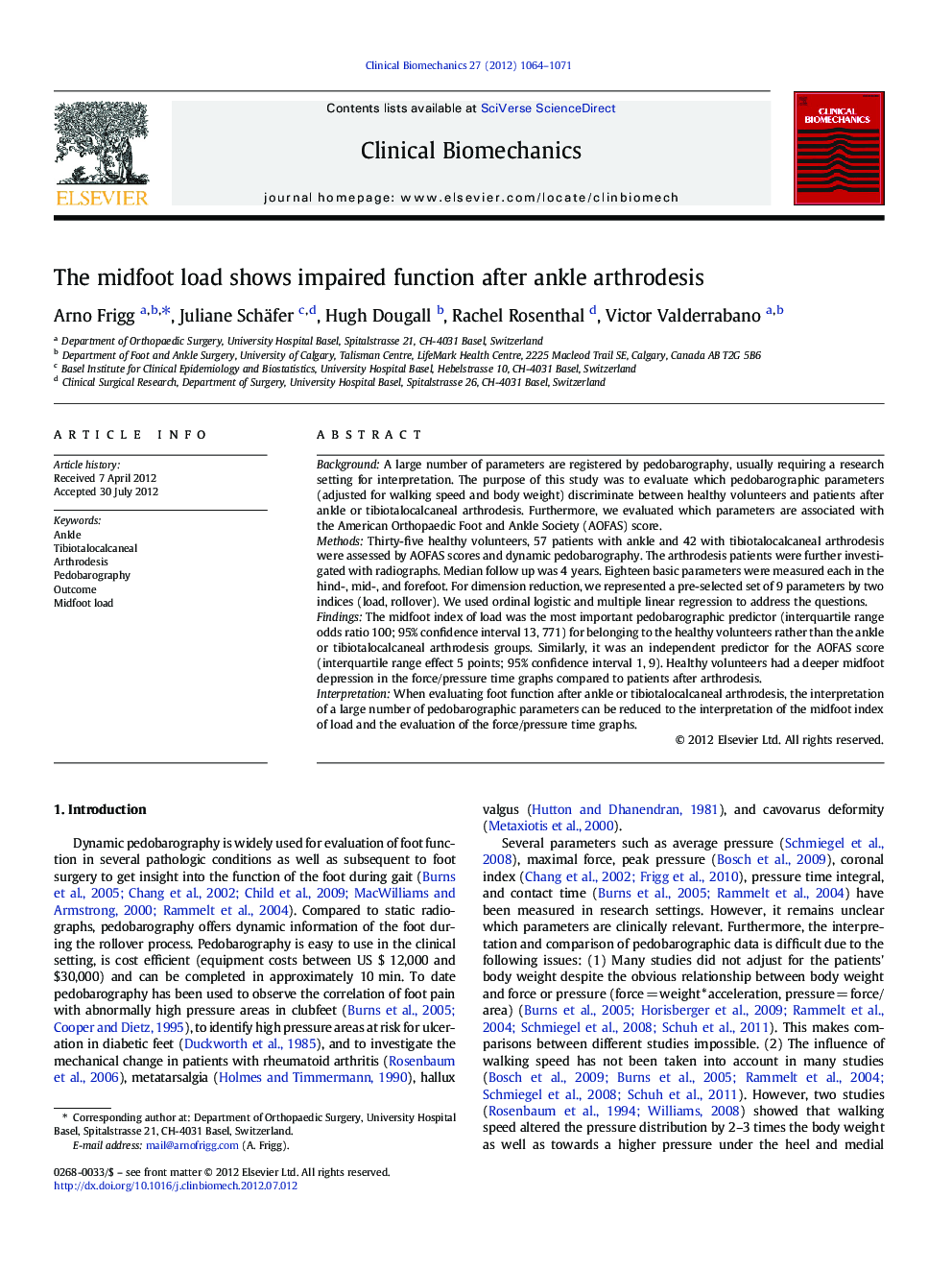| Article ID | Journal | Published Year | Pages | File Type |
|---|---|---|---|---|
| 6204923 | Clinical Biomechanics | 2012 | 8 Pages |
BackgroundA large number of parameters are registered by pedobarography, usually requiring a research setting for interpretation. The purpose of this study was to evaluate which pedobarographic parameters (adjusted for walking speed and body weight) discriminate between healthy volunteers and patients after ankle or tibiotalocalcaneal arthrodesis. Furthermore, we evaluated which parameters are associated with the American Orthopaedic Foot and Ankle Society (AOFAS) score.MethodsThirty-five healthy volunteers, 57 patients with ankle and 42 with tibiotalocalcaneal arthrodesis were assessed by AOFAS scores and dynamic pedobarography. The arthrodesis patients were further investigated with radiographs. Median follow up was 4Â years. Eighteen basic parameters were measured each in the hind-, mid-, and forefoot. For dimension reduction, we represented a pre-selected set of 9 parameters by two indices (load, rollover). We used ordinal logistic and multiple linear regression to address the questions.FindingsThe midfoot index of load was the most important pedobarographic predictor (interquartile range odds ratio 100; 95% confidence interval 13, 771) for belonging to the healthy volunteers rather than the ankle or tibiotalocalcaneal arthrodesis groups. Similarly, it was an independent predictor for the AOFAS score (interquartile range effect 5 points; 95% confidence interval 1, 9). Healthy volunteers had a deeper midfoot depression in the force/pressure time graphs compared to patients after arthrodesis.InterpretationWhen evaluating foot function after ankle or tibiotalocalcaneal arthrodesis, the interpretation of a large number of pedobarographic parameters can be reduced to the interpretation of the midfoot index of load and the evaluation of the force/pressure time graphs.
